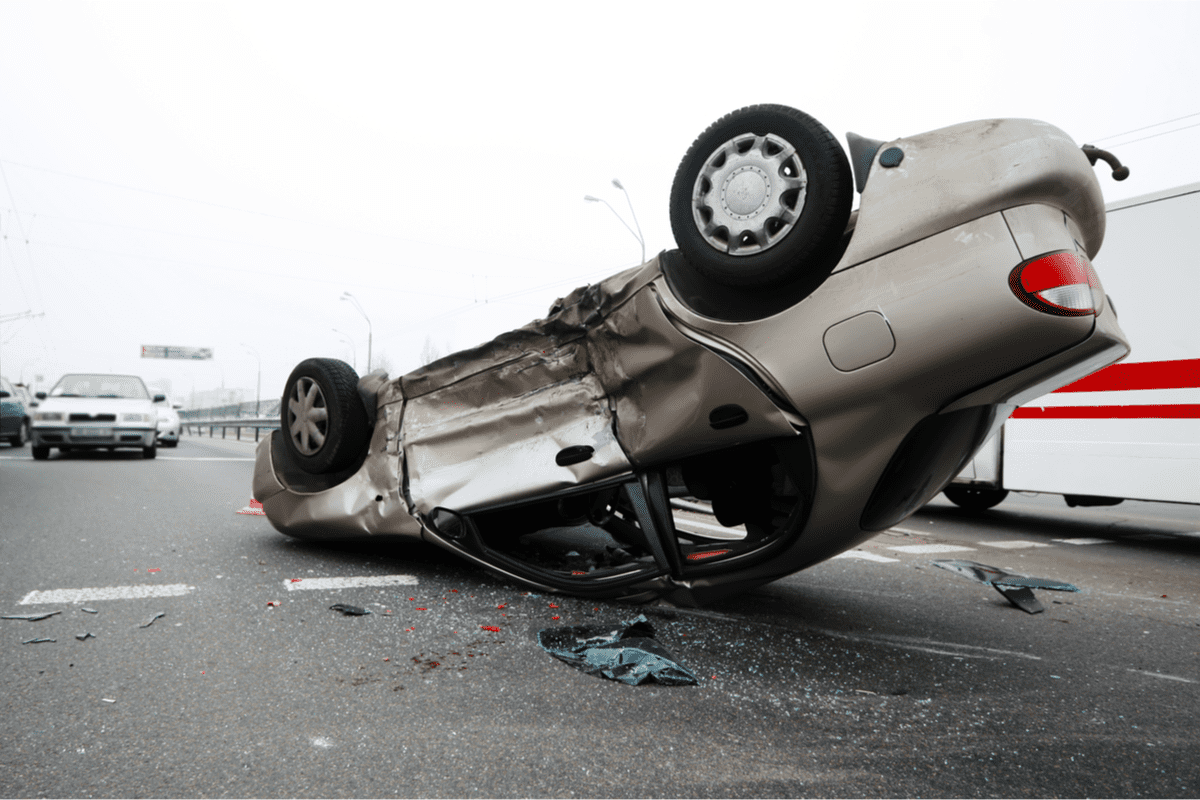More than a decade ago, Bill Hansen found himself caught in rush hour traffic on Chicago’s Edens Expressway. Vehicles flowed along the highway in dense herds, when suddenly, brake lights flashed, and traffic slowed to a stop.
Bill checked his rearview mirror and noticed the cars were slowing down, except for one. One car sped straight toward the rear of his vehicle. He was trapped in his car, trapped in the terrifying moment. With no power over the situation, he panicked. He braced for impact and screamed, “No!”
The car smashed into the back of Bill’s car.
Incredibly, Bill walked away from the collision without a scratch, but a few days later, he felt strange, like reality had slipped into a dream. He started to wonder if he really died in the accident. He worried that his life and the world around him were an illusion. He sought help from a therapist, and over time, he began to piece his consciousness back together.
But the experience left scars. Whenever Bill drives and traffic begins to slow in front of him, he gets tense. He frantically looks over his shoulder. Flashbacks flood back from the crash, and he feels like that helpless victim with that car barreling at him again.
Debbie Miller-Koziarz had a comparable situation. In 1981, a drunk driver slammed into her on the North Shore of Chicago. Over the next six years, she would undergo nine surgeries. Her confidence would be crushed by self-doubt.
Anxiety seized Debbie, and she constantly worried about things out of her control. Sometimes at night, if oncoming headlights blared in her face, the fear would be so strong that she considered jumping from the moving car.
Both Bill and Debbie suffered from Post-Traumatic Stress Disorder (PTSD), a condition that arises after a person’s life is in danger and they believe death is imminent. The longer a person waits to take those difficult steps of getting back in the car and getting down the road, the worse PTSD can get.
Predicting PTSD
In the United States, vehicle collisions are the leading cause of PTSD. According to a recent study by the National Institute of Mental Health (NIMH), approximately six million motor vehicle crashes result in more than two million injuries every year. Depending on the year and proper diagnosis, between 30% to 40% of car crash survivors will develop PTSD. Almost 50% of the diagnosed cases have symptoms that parallel episodes of major depression.
Data shows that it does not matter the seriousness of the crash or the severity of injuries, or even if there was no injury. None of these are necessarily indicators to predict whether a person will suffer from PTSD. A 2012 study showed a direct correlation between crash survivors perceiving a risk of their death and developing PTSD within six months of the accident.
Symptoms of PTSD can be seen minutes, hours, days, or months after a crash and can go for years. The most prevalent symptoms of PTSD include:
- Avoiding behaviors like driving or riding in a car
- Suppressing and dismissing thoughts concerning the crash
- Numbing emotions, sometimes using drugs to dull the painful, intrusive thoughts
- Suffering from chronic pain
- Experiencing gastrointestinal problems and digestive issues
- Misusing addictive substances
- Ruminating, dreaming about, or re-experiencing the trauma, focusing on the negatives
- Exhibiting dissociative behaviors that cause issues with day-to-day life
The likelihood of PTSD development depends on various risk factors that may include:
- A survivor’s perception that their or others’ lives were threatened
- A personal history of previous trauma or mood disorders
- A family history of mental health disorders
- A swing between elevated levels of emotion like anxiety, guilt, horror, or helplessness during or after a car crash
- A lack of support socially after a traumatic event
- A prior diagnosis of a psychological adjustment disorder
Most of these factors are normal after collisions and organically subside over time. When these feelings do not diminish or the symptoms get worse, treatment for PTSD should be sought. Stressors can inhibit certain aspects of life and continue for years without treatment.
Treating PTSD
The American Academy of Family Physicians (AAFP) and the National Institute of Mental Health (NIMH) both agree on several effective treatments for PTSD. The therapy techniques to manage PTSD include:
- Cognitive Processing Therapy (CPT) – Generally, this therapy is delivered over 12 sessions. Patients challenge unhealthy beliefs in regard to traumatic events and eliminate the enduring negative effects impacting their current life.
- Eye movement desensitization and reprocessing (EMDR) – Established in the late 1980s. Reducing anxiety by training patients to use voluntary eye movements while thinking traumatic thoughts. There are eight phases to formal EMDR:
- Phase 1: Discuss patient’s history and plan treatments.
- Phase 2: Preparation.
- Phase 3: Assessment
- Phase 5: Desensitization
- Phase 6: Installing positive cognitions
- Phase 7 and 8: Reevaluation phase
- PTSD Medications – A balance of medications and therapies is the typical treatment and management of PTSD. There are two types of antidepressants used in treatment—Selective Serotonin Reuptake Inhibitors (SSRI) and Serotonin-Norepinephrine Reuptake Inhibitors (SNRI). The four most recommended medications for PTSD are:
- Fluoxetine (Prozac)
- Paroxetine (Paxil)
- Sertraline (Zoloft)
- Venlafaxine (Effexor)
The Champion’s Confession
Back in April, boxer Errol Spence Jr. got into a fender bender. This was his second crash in three months. In the first accident, the welterweight champion was speeding in his Ferrari Spider when he lost control, the car lifted off the asphalt and began flipping down the street end-over-end.
Spence climbed out of the single-car wreckage with bruises, bumps, and a few scrapes. But after another car rear-ended his Mercedes-Benz G-Class in April, he revealed that he was suffering from PTSD.
Spence admits the crash shook him up with a sort of fight-or-flight response. Driving down the road or sitting at a red light, he has constantly had flashes of other cars smashing into him again. His insurance company also dropped him as a client. In roughly six months, more than $600,000 had to be paid out for his Ferrari and Mercedes.
Whether or not he has been formally diagnosed with PTSD is not the concern. The headline here is that a championship boxer readily admits to suffering from PTSD like the other 40% of collision survivors.








